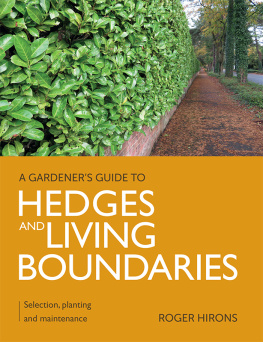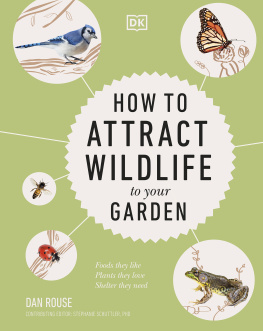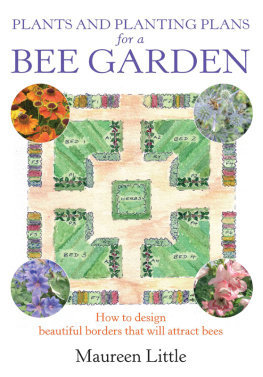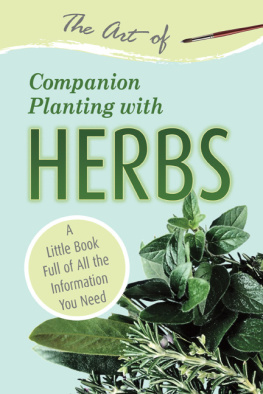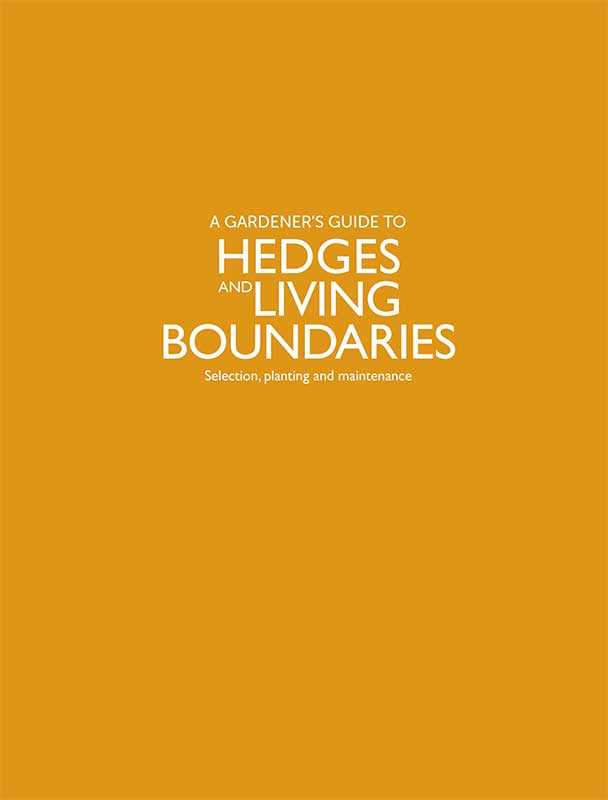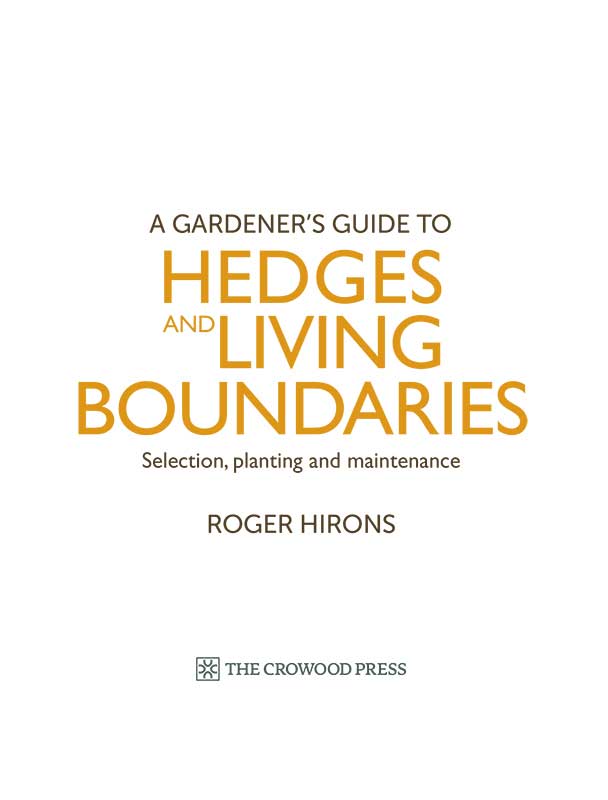Page List
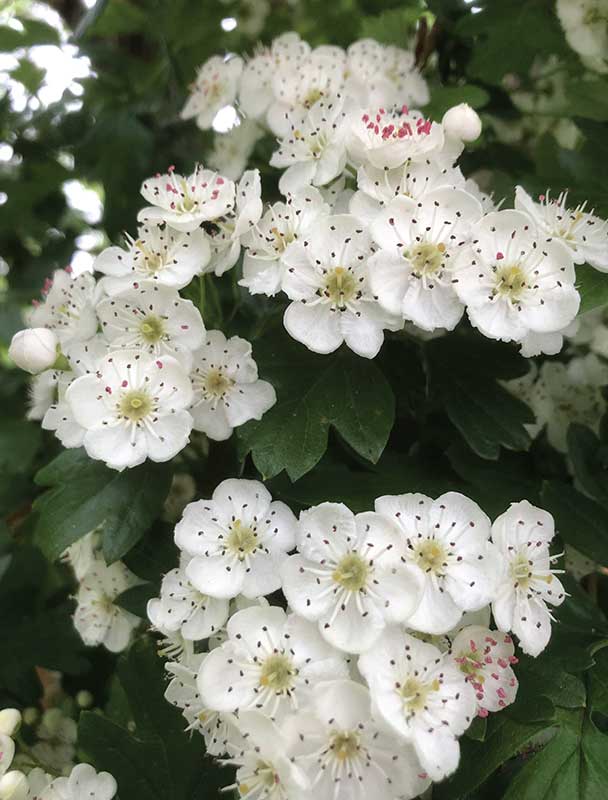
First published in 2022 by
The Crowood Press Ltd
Ramsbury, Marlborough
Wiltshire SN8 2HR
www.crowood.com
This e-book first published in 2022
Roger Hirons 2022
All rights reserved. This e-book is copyright material and must not be copied, reproduced, transferred, distributed, leased, licensed or publicly performed or used in any way except as specifically permitted in writing by the publishers, as allowed under the terms and conditions under which it was purchased or as strictly permitted by applicable copyright law. Any unauthorised distribution or use of this text may be a direct infringement of the authors and publishers rights, and those responsible may be liable in law accordingly.
British Library Cataloguing-in-Publication Data
A catalogue record for this book is available from the British Library.
ISBN 978 0 7198 4126 2
Cover design by Blue Sunflower Creative
INTRODUCTION
Welcome to the journey of selecting the correct boundary choice for your client and their neighbour, or for yourself and your neighbour. Whatever you decide to plant as a living divide will affect at least one person who lives on the other side of that planting. Of course, creating an internal divide within your own grounds will not have an impact on anyone else, but it will affect the surrounding plants and therefore wise choices are still required. When the right plants and structure are chosen, the result will be a joy to look at as well as to look after and the neighbour will agree. When the incorrect choice has been implemented, this is when neighbours can fall out.
With this in mind, it is sensible to begin any project by talking to your neighbour or your clients neighbour about the sort of planting you are looking to use. As with everything, a little communication can go a long way. The other major consideration when selecting plants is the amount of time that will be available for maintenance. Time inevitably moves on alarmingly quickly when you have a busy life and a living divide that requires lots of tying in or pruning regularly can soon be abandoned. Some plants can recover from irregular care, but others will never be the same again if neglect has gone too far.
The aim of this book is to impart some of my knowledge, gained through 35 years experience in the industry, to reduce the number of mistakes that can happen when creating a living divide. Choosing the wrong plants can prove to be costly in the long run, both in terms of money and time, and few people can afford to be wasteful in this way. However, as far as is possible, concerns over expenditure should not be allowed to get in the way of purchasing the right plant, which may well outlive both garden designer and owner. Many mature gardens have been planted over time, sometimes over several generations. With careful consideration, you should be able to make an informed choice and achieve a good result that will stand the test of time.
Another important consideration is the provision of a habitat for wildlife. This is a subject close to my heart I believe we have a duty to look after what we have been given. Back in the 1990s it was suggested that everyone with a garden should devote a quarter of it to measures to encourage wildlife. Ever-increasing infrastructure, especially in urban areas, has led to the destruction of habitats. Water displacement, caused by hard surfaces being cambered towards main drain systems, has had a direct negative influence on the diversity of flora and fauna, as water that should be allocated to green areas is directed away to somewhere else. A living divide can create a wonderful natural corridor that can harbour a huge and diverse range of insects, birds and small mammals. Looking after the base of the food chain will directly contribute to the survival of wildlife in urban spaces.
A few years ago, I was commissioned to landscape part of the rear garden to a fairly new house. It incorporated a mixed hedge that was more than fifty years old, with big rocks along its base. As I trudged back and forth with tons of mulch and soil in my wheelbarrow, a tiny dormouse came and sat on one of these rocks and watched me. Apparently, when the new houses in that area had been built, the local authority had insisted that the old hedgerow be kept. Their approach is to be applauded, allowing wildlife to be preserved within urban spaces.
When you first plant a new living divide, it will take time for the wildlife to move in. However, as it matures, it will start to create a decent habitat. All living creatures need to be able to feed and to find shelter. In the ideal scenario, there would be small holes, roughly six inches square, at the base of a few random fences or solid boundaries in everyones garden, and a living boundary in front of these inert divides. This would create a labyrinth of corridors, connecting to one another, which could be used by birds and hedgehogs and other small mammals. The base of the living divide will change each year, with the seasons, and if that part of the system is left alone, then the insects and creepy crawlies will have a home, giving the small birds and small mammals something to live off.
A mixed hedge can be planted either primarily for humans to enjoy, or specifically to increase the diversity of insect and creature within the garden or as a combination of both. The first version will produce fruit that can be made into edible products. If you go down this route, do some research into recipes in advance of planting, to determine which ingredients will be the most useful, and then plant more of them to maximize pollination and therefore get more fruit. Prioritizing the support of wildlife is the responsible option. It will be extremely rewarding, and is especially important in urban areas, where living things have been increasingly replaced with inert features. It is possible to compensate somewhat for the imbalance by planting up walls and fences with the correct plants, but the best way is to create an entire living boundary. My hope is that this book will help you to do this, and that the result will be the survival and preservation of lots of wild creatures. With the right selection from the thousands of plants that are available, a carefully thought out mixed boundary can provide a huge amount of interest for the human, as well as sustaining a diverse range of creatures, which are vital to the food chain and to the pollination of all the plants in the garden.
Below ground, the root systems also play a vital role in the soil structure, both in absorbing and aerating the earth, which is essential for all living things. The leafier a garden is, the better it is for its owner.
If it is chosen carefully, a living boundary can provide a mass of interest, in terms of both colour and fragrance, with flowers and fruits, stems and leaves all contributing to the well-being of humans and wildlife. It can also provide amazing contrast in terms of foliage shapes and structure. Spiky plants can also be useful, to create a deterrent to intruders a sort of natural barbed wire and to offer really small garden birds a safe place to nest, eat and live.
An internal boundary or divide is a really good way of segregating a garden, perhaps to separate utility, or the productive part of the garden, from tranquillity a space to retreat to with a cup of tea and a good book on a summer evening. The internal boundary can help create this separation with minimal work and maximum effect. Working out where the sun will be at certain times of day will allow you to create escape rooms for the siting of a chair or hammock. You do need to remember, however, that the divide will also create shade. I have used internal living divides to separate vegetable plots, to screen off greenhouses and sheds, and to hide a trampoline, where a more tranquil outlook was required. I have seen great success in the use of living divides along inert supports near orchards and vegetable plots, keeping beneficial insects close to plants that need pollination at the correct time, thus ensuring optimum fruit and vegetable production.

